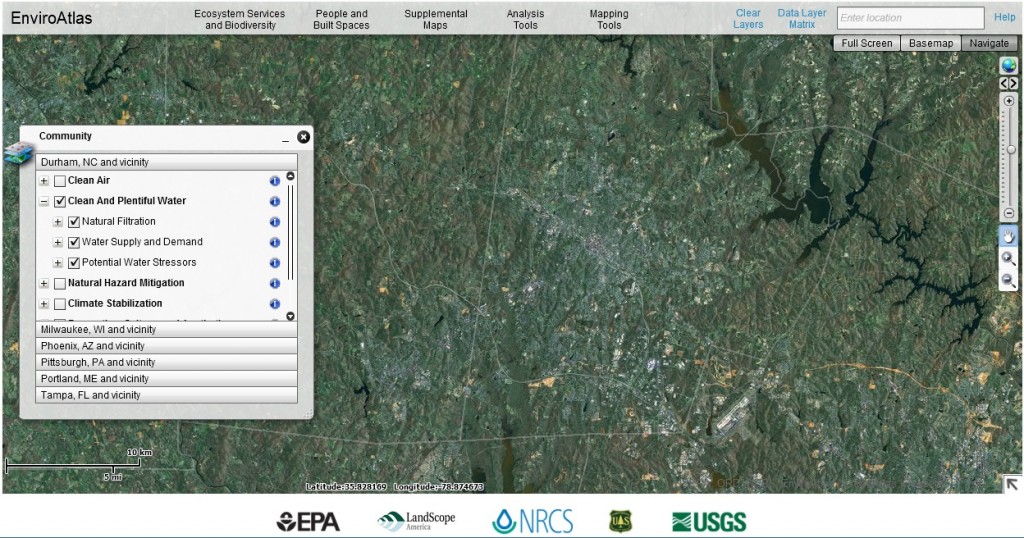 On May 7, the U.S. Environmental Protection Agency (EPA) announced the release of EnviroAtlas. The interactive ecosystem mapping tool is web-based and integrates more than 300 separate data layers. EnviroAtlas can help people learn about ecosystems and their benefits, including protection from hurricanes and floods. It also can help decision-makers understand the environmental implications of planning and policy decisions. The tool integrates geospatial data from a variety of sources, allowing users to visualize and analyze how decisions affect ecosystems and their ability to provide goods and services. EnviroAtlas is designed for people from all levels of government, professionals, researchers, educators, non-governmental organizations, and anyone interested in considering the effects of a decision, such as siting a new road or city park.
On May 7, the U.S. Environmental Protection Agency (EPA) announced the release of EnviroAtlas. The interactive ecosystem mapping tool is web-based and integrates more than 300 separate data layers. EnviroAtlas can help people learn about ecosystems and their benefits, including protection from hurricanes and floods. It also can help decision-makers understand the environmental implications of planning and policy decisions. The tool integrates geospatial data from a variety of sources, allowing users to visualize and analyze how decisions affect ecosystems and their ability to provide goods and services. EnviroAtlas is designed for people from all levels of government, professionals, researchers, educators, non-governmental organizations, and anyone interested in considering the effects of a decision, such as siting a new road or city park.
Communities often are faced with difficult decisions, such as tradeoffs between development and maintaining local wetlands or urban forests. EnviroAtlas helps communities better understand the potential benefits and drawbacks of their decisions by providing data, maps, information, and tools to analyze relationships between nature, health and well-being, and the economy.
EnviroAtlas combines hundreds of data layers developed through collaboration among EPA; U.S. Geological Survey; U.S. Forest Service; other federal, state, and nonprofit organizations; and several universities. Using powerful web application tools, it lets users generate customized maps and images that show the condition of communities’ air, water, and landscapes; as well as population density and other demographic data. Users can investigate land cover patterns, see how ecosystem services reduce pollution, and compare data across selected communities. No special software is needed to view EnviroAtlas, and a mobile-friendly version is planned for the future. Read more.





